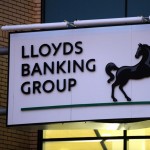Yesterday’s trade saw EUR/USD within the range of 1.0982-1.1197. The pair closed at 1.0983, plunging 1.32% on a daily basis, or the most considerable daily loss since June 23rd, when it depreciated 1.51%. The daily low has also been the lowest level since July 7th, when the cross registered a low of 1.0917.
At 7:01 GMT today EUR/USD was down 0.20% for the day to trade at 1.0976. The pair broke the first weekly S1 level and touched a daily low at 1.0967 at 6:22 GMT.
Fundamentals
Euro area
Italian Consumer Inflation – final estimate
Italys final annualized consumer inflation was probably at 0.1% in June, matching the preliminary inflation estimate, reported on June 30th. In May the final annualized index of consumer prices (CPI) rose 0.1%, missing the preliminary estimate of 0.2% annual CPI growth. According to provisional data, in June the largest annual price increase was reported for food and non-alcoholic beverages (up 1%), restaurants and hotels (up 1.6% following a 1.1% gain in the prior month), miscellaneous goods and services (up 0.2%), health care (up 0.5%) and recreation and culture (up 0.4%). On the other hand, downward pressure came from costs of transportation (down 1.6%) and housing and utilities (down at an annual rate of 1.3%).
Key categories, included in Italys Consumer Price Index, are food and non-alcoholic beverages (accounting for 16% of total weight), transport (15%), restaurants and hotels (11%) and housing, water, electricity and other fuels (10%). Other categories are clothing and footwear (9%), furnishing and household equipment (8%), recreation and culture (8%) and health (also 8%). Communication, education, alcoholic beverages, tobacco and other goods and services comprise the remaining 15% of the index.
The nations final annualized CPI, evaluated in accordance with the harmonized methodology, probably increased 0.2% in June, according to market expectations. If so, this would match the preliminary HICP estimate, reported on June 30th. In May the final annualized HICP rose at a pace of 0.2%, which confirmed the provisional estimate. The National Institute of Statistics (Istat) is to release the official CPI report at 8:00 GMT.
German, Euro area Economic Sentiment Index by ZEW
The gauge of economic sentiment in Germany probably dropped a fourth straight month in July, reaching 30.0, according to the median forecast by experts, down from 31.5 in June. If so, this would be the lowest index reading since November 2014, when it was reported at a level of 11.5.
The ZEW (Zentrum für Europäische Wirtschaftsforschung) economic expectations index is published on a monthly basis. The study encompasses up to 350 financial and economic analysts. The indicator reflects the difference between the share of analysts, that are optimistic and those, that are pessimistic about the expected economic development in Germany over the next six months. A positive value indicates that the proportion of optimists is larger than that of pessimists. A ZEW reading of -100 suggests that all analysts are pessimistic about the current developments and expect economic conditions to deteriorate. A ZEW reading of 100 implies that all analysts are optimistic about the current situation and expect conditions to improve. A ZEW reading of 0 indicates neutrality.
The index of current assessment in Germany probably dropped a third month in a row in July, reaching a value of 60.0, according to market expectations. If so, this would be the lowest index reading since March 2015, when a level of 55.1 was reported. The gauge stood at 62.9 in the prior month.
The ZEW Economic Sentiment index for the whole Euro zone probably lost ground for a third straight month in July, reaching 51.1. If so, this would be the lowest level since January 2015, when the indicator came in at 45.2. In June the index was at a level of 53.7.
In case the gauge of economic sentiment dropped at a sharper pace than expected, this would certainly have a negative impact on the common currency. The official data is scheduled to be released at 9:00 GMT.
Euro area Industrial Output
The seasonally adjusted index of industrial production in the Euro area probably rose 0.2% in May compared to a month ago, following a 0.1% increase in April. Annualized output probably increased at a pace of 1.9% in May, according to expectations. If so, this would be the fastest annual rate of increase since November 2013, when production climbed 2.8%. In April industrial output expanded at an annual rate of 0.8%, as production of capital goods went up 2.1%, production of durable consumer goods expanded 1.7% and both production of intermediate goods and energy climbed 0.2%. At the same time, production of non-durable consumer goods shrank 0.3% in April compared to the same period a year ago.
The index, reflecting the business cycle, measures the change in overall inflation-adjusted value of output in sectors such as manufacturing, mining and utilities. In case industrial output expanded more than anticipated, this would support demand for the euro, as this implies a higher probability of inflationary pressure. Eurostat is to publish the official data at 9:00 GMT.
United States
Retail Sales
Retail sales in the United States probably rose 0.3% in June on a monthly basis, according to the median forecast by experts. In May retail sales recorded a 1.2% climb, which has been the largest monthly increase since March 2014, when sales went up 1.5%. This result was supported by purchases of automobiles, food and gasoline. Sales at gasoline stations rose the most in May (+3.7%), followed by sales of building materials and garden equipment (+2.1%), sales of motor vehicles and parts (+2%), sales at clothing and footwear stores (+1.5%) and sales at non-store retailers (+1.4%), according to the report by the US Census Bureau.
Annualized retail sales climbed 2.7% in May, or the strongest annual rate since January, after in April sales increased 1.5%.
The report on retail sales reflects the dollar value of merchandise sold within the retail trade by taking a sampling of companies, operating in the sector of selling physical end products to consumers. The retail sales report encompasses both fixed point-of-sale businesses and non-store retailers, such as mail catalogs and vending machines. The Census Bureau, which is a part of the Department of Commerce, surveys about 5 000 companies of all sizes, from huge retailers such as Wal-Mart to independent small family firms.
US core retail sales, or retail sales ex autos, probably went up 0.5% in June compared to a month ago, following a 1.0% surge in May. If so, this would be the fourth consecutive month of core sales increase. This indicator removes large ticket prices and historical seasonality of automobile sales.
The retail sales index is considered as a coincident indicator, thus, it reflects the current state of the economy. It is also considered a pre-inflationary indicator, which investors can use in order to reassess the probability of an interest rate hike or cut by the Federal Reserve Bank. In addition, this indicator provides key information regarding consumer spending trends. Consumer expenditures, on the other hand, account for almost two-thirds of the US Gross Domestic Product. Therefore, a larger-than-expected rate of increase in sales would certainly boost the US dollar. The official report is due out at 12:30 GMT.
Bond Yield Spread
The yield on German 2-year government bonds went as high as -0.191% on July 13th, or the highest level since June 26th (-0.183%), after which it slid to -0.229% at the close to lose 2.2 basis points (0.022 percentage point) on a daily basis.
The yield on US 2-year government bonds climbed as high as 0.685% on July 13th, or the highest level since July 2nd (0.716%), after which it fell to 0.681% at the close to gain 4.4 basis points (0.044 percentage point) for the day.
The spread between 2-year US and 2-year German bond yields, which reflects the flow of funds in a short term, expanded to 0.910% on July 13th from 0.852% during the prior trading day. The July 13th spread has been the most notable one since July 1st, when the difference was 0.927%.
Meanwhile, the yield on German 10-year government bonds soared as high as 0.971% on July 13th, or the highest level since June 11th (1.035%), after which it slid to 0.850% at the close to lose 4.6 basis points (0.046 percentage point) compared with July 10th, while marking the first drop in four days.
The yield on US 10-year government bonds climbed as high as 2.470% on July 13th, or the highest level since July 2nd (2.470%), after which it slipped to 2.448% at the close to add 4.7 basis points (0.047 percentage point) on a daily basis, while marking a third consecutive day of gains.
The spread between 10-year US and 10-year German bond yields expanded to 1.598% on July 13th from 1.505% on July 10th. The July 13th yield difference has been the largest one since July 9th, when the spread was 1.613%.
Pivot Points
According to Binary Tribune’s daily analysis, the central pivot point for the pair is at 1.1054. In case EUR/USD manages to breach the first resistance level at 1.1126, it will probably continue up to test 1.1269. In case the second key resistance is broken, the pair will probably attempt to advance to 1.1341.
If EUR/USD manages to breach the first key support at 1.0911, it will probably continue to slide and test 1.0839. With this second key support broken, the movement to the downside will probably continue to 1.0696.
The mid-Pivot levels for today are as follows: M1 – 1.0768, M2 – 1.0875, M3 – 1.0983, M4 – 1.1090, M5 – 1.1198, M6 – 1.1305.
In weekly terms, the central pivot point is at 1.1096. The three key resistance levels are as follows: R1 – 1.1276, R2 – 1.1393, R3 – 1.1573. The three key support levels are: S1 – 1.0979, S2 – 1.0799, S3 – 1.0682.





